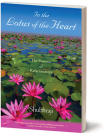A universal teaching from an ancient tradition
It is the philosophic basis of all Yogas
OVERVIEW |
The word ‘Vedanta’ comes from the Sanskrit root word ‘vid’ – to know.
Vedanta then, means the knowledge that frees us from all limitation. It teaches that our real nature is Divine. Every living being is of the nature of God, or Brahman — the Absolute Reality or Universal Being.The spring of joy is within us — it is our very nature. The study of Vedanta is a journey toward reaching this deep understanding of ones’ own True nature. |
SIMPLY SPEAKING |
Essentially we are just Pure Consciousness or Awareness. There is only one ‘Intelligent Energy’ which appears as the world of names and forms. I am pure energy, my source is Consciousness. When I feel disconnected from it, or lose touch with it, I become spiritually ignorant or unaware.Then I project my ideas on my own mind and on others – this is the Ego. This limited self identity covers the real Me. Identifying with the Ego I cling to appearances and stray away from the Truth. The purpose of Vedanta is to remove this Ignorance so that we can claim our eternally free blissful nature. |
WHO IS VEDANTA FOR? |
It a universal teaching, meant for everybody.Shubhraji’s audience is diverse and her talks are easily understood even by people who have no prior exposure to Hindu culture or Vedanta. |
RELEVANT IN TODAY’S WORLD |
The teachings are profound, yet simple; logical, yet warming the heart with love; completely personal, yet universal, and above all, very relevant in today’s world.Sometimes we get caught up in the drama of our life and take events and situations to be so real that we get wound up in them and lose our peace of mind.
The teaching of Vedanta shows us the distinction between that which is eternal and that which is transient or of an illusory nature and how we can shift our focus to the higher perspective. |
VISION OF VEDANTA |
The abiding knowledge of Vedanta rests in the vision of the One Reality, a vision that transcends race, creed, class, gender, and nationality.The direct method of Self Enquiry and meditation are the hallmarks of this system.
The paths (of Knowledge, Service and Devotion also referred to as yogas) are stated clearly and there is no dogmatic assertion but Truth that is confirmable by our own experience |
ADVAITA,
|
Beyond god and evil or right and wrong, we find central idea of this teaching is the non – dual Philosophy of Advaita. Advaita is a monistic system of thought. Though Hindu philosophy includes a myriad of deities — they are considered different aspects of the one energy -Brahman.Advaita literally means non-duality, or One Reality without a second. This One Reality is identical with our own Self in essence. Advaita refers to the identity of the Self (Atman) and the Whole (Brahman).
Vedanta affirms that we can know our True Self by:
Though the philosophy was in practice for a long time, its main exponent Adi Sankara (780-820 A.D.), revitalized the pivotal ideas and gave it a fresh impetus. |
VEDAS: THE SACRED TEXT |
The root philosophy of Vedanta is found in the spiritual books called Vedas: They are the most ancient religious texts that exist today. They were revelations to masters in the Himalayas who were in completly merged in union with Brahman or the Universal Being. The Vedas are considered the authoritative spiritual texts of Hinduism or Santana Dharma (Eternal Law) as it is called. The 4 Vedic texts are: Rig, Yajur, Sama and Atharva Veda. |
VEDANTIC TEXTS |
There are three main texts studied by Vedanta students. They are called ‘Prasthana traya’ in Sanskrit. Originally passed down orally, these were only written and compiled about 1500 B.C.E.
|
The first part of each Veda is concerned with actions and worldly gain, while the latter portion, called the Upanishads, is concerned with Self-Knowledge.
Once we gain Knowledge of our Higher Self, there are no more self centered desires and we become open to experience the fulfillment of Life. This fulfillment is the goal of life.
Though there are sub schools within the Vedanta system, Advaita is the main sub-school of the Vedanta. Other major sub-schools of Vedanta are: Vishishta Advaita (Qualified Dualism) and Dvaita (Dualism).
The traditional approach follows a verse-by-verse method of instruction passed down from generation to generation in the ancientgurukula or ashrams (spiritual centers).
In some of her talks Shubhraji teaches the Sanskrit verses from original texts, and then makes them relevant to daily life. In other talks, she applies the concepts of Vedanta and presents her ideas in a simple way depending on the type of audience.
“A deep, wise, and wonderful exploration of the Vedanta path for relationships both with yourself and with others. Shubhraji provides everything you need to create healthy, fulfilling relationships…”
Order Now